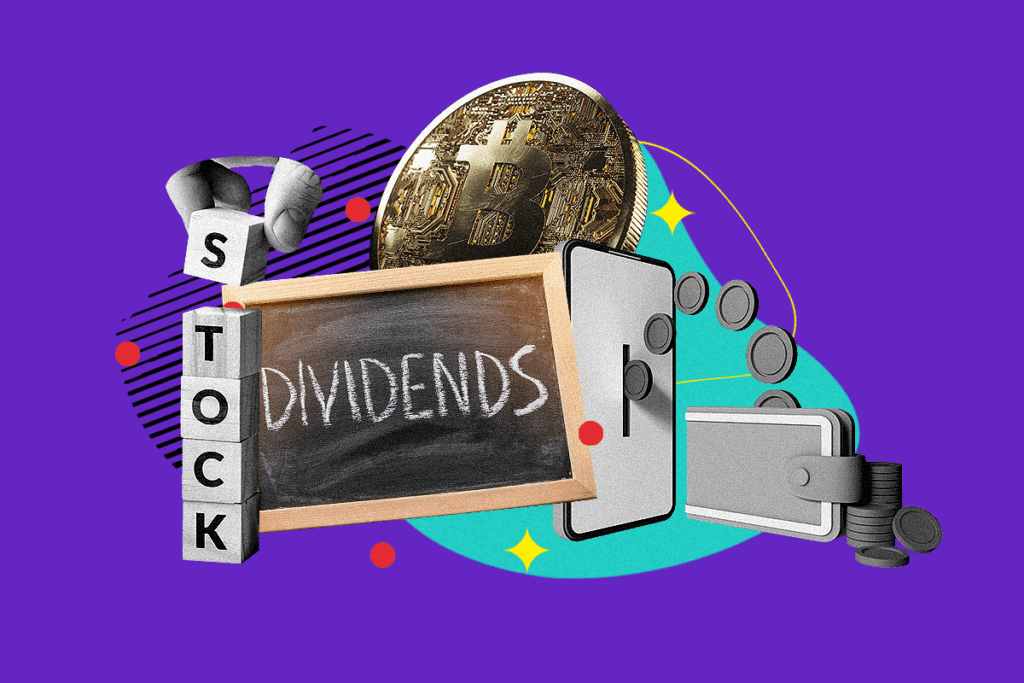Happy HODLdays: Earning Interest With Peer-to-Peer Crypto Lending
Hodling is great, but it just doesn’t cut it for everyone. As an alternative to staking, P2P crypto lending could be the flexible passive income you’re looking for.

Most people have things in their portfolios they’d never dare touch. It could be the Bitcoin you’ve sworn to hodl for eternity or the last share of the first IPO you bought. Whatever the case, there’s always the looming question: is this enough? Why hold a stock for its sentimental value when you could buy one that’ll appreciate faster or earn dividends? And why let your Bitcoin sit in a wallet when it could be earning compounding interest?
The worlds of centralized finance (CeFi) and decentralized finance (DeFi) are blossoming, and P2P crypto lending is a huge opportunity for those who hodl.
Not only are people lending out their crypto, but they’re also taking out loans and putting their crypto up as collateral. If that isn’t enough, people are even getting rewarded for borrowing crypto. Yes, you read that right, and this is just scratching the surface.
What is crypto P2P lending?
Crypto peer-to-peer lending is the practice of borrowing and lending cryptocurrency assets. There are numerous platforms for borrowing and lending crypto with new ones popping up virtually every day, but they will all fall into either one of two categories: CeFi or DeFi. For instance, KuCoin is a centralized crypto lending platform, while DeFi platforms like Aave and MakerDao have no central authority.
Another thing to note is that the vast majority of crypto loans are secured, meaning they require the borrower to put up collateral. Collateral can be held in crypto or fiat, but the majority of platforms require borrowers to be overcollateralized. This means that you can only take out a loan that is worth less than your collateral. If a borrower fails to repay a P2P crypto loan, the collateral is liquidated and used to compensate the lender.
How collateralized crypto lending works
Unlike loans in the traditional world, there is very little interaction between the lender of a crypto P2P loan and the borrower. The need for credit checks and KYC is completely eliminated with crypto P2P lending (although CeFi platforms may still require them) because borrowers are required to put up collateral. It’s common for funds to be pooled together, with lenders earning a variable yield.
Collateral can be liquidated if the loan isn’t repaid, but some platforms implement measures that liquidate collateral if the loan exceeds its value. This can happen if price volatility causes the value of your crypto collateral to drop, but this can be prevented by keeping track of your health factor. This factor can have other names, but it’s usually the borrower’s collateral-to-debt ratio denoted by a number or percentage, with anything under one or 100% being liquidated.
Investing in CeFi crypto lending
Anyone who holds a popular cryptocurrency asset can use it to invest in P2P crypto lending. One of the most popular ways is using a CeFi crypto lending platform like KuCoin. KuCoin does not require users to stake or lock their crypto but only transfer it into a KuCoin wallet.
KuCoin gives depositors the option to use funds as collateral for borrowing either crypto or fiat. The funds deposited to your KuCoin account will accumulate interest based on your asset’s advertised rate. KuCoin accepts dozens of assets—like USDT and BTC—and offers different interest rates for each of them.
Investing in DeFi crypto lending
One way to invest in crypto lending is to make a deposit with a decentralized liquidity market protocol like Aave. Aave allows users to participate as either borrowers or depositors of several assets, including the native AAVE token. Depositors lend their crypto to the protocol and are rewarded with interest that borrowers pay. Depositors can borrow from the Aave protocol, but their deposit must exceed the value of the loan in order to serve as collateral.
The major difference between CeFi platforms like Celsius and DeFi protocols like Aave is that Celsius accounts are custodial, meaning that deposited funds are fully controlled by Celsius, while Aave has no central authority and requires a DeFi wallet. It should also be noted that DeFi P2P crypto lending platforms like Aave only accept stablecoins like Tether, while CeFi platforms usually accept both stablecoins and fiat.
Flash loans
Flash loans are instantaneous unsecured crypto loans that are initiated using a smart contract. Flash loans being instantaneous means that the transactions to borrow and repay the loan must be in consecutive blocks. So what’s the point of taking out a loan just to pay it back immediately? Well, there’s a technical answer, but the main thing to know is that these are usually used to facilitate trading on decentralized exchanges (DEX).
Overcollateralized stablecoins
We’ve covered all the ways you can lend your crypto to earn more crypto, so why don’t we just start printing our own money? This is partly in jest, but the truth is that you can earn by essentially borrowing against your crypto. There are DeFi platforms that enable you to lock your crypto in a smart contract ‘vault’ in order to mint stablecoins. An example of an overcollateralized stablecoin is Dai.
Technically, all stablecoins are collateralized. For example, USDC is secured by a USD equivalent held by a centralized organization. Dai is different because it is overcollateralized by crypto, meaning that Dai is always backed by crypto of greater or equal value. Dai is also not issued by a company, but rather runs on a protocol governed by a decentralized autonomous organization (DAO) called MakerDao.
Just like MakerDao created Dai, other DAOs are using similar models to enable users to mint overcollateralized and multi-collateralized stablecoins. Stablecoin minting protocols allow anyone to create stablecoins backed by their own crypto while also earning rewards on your collateral. On top of that, you can do whatever you want with the stablecoins you minted, such as buying more crypto and rinsing and repeating or lending out to another protocol. Talk about financial freedom.
Remember that joke about printing money from before? Well, borrowing against your crypto is no joking matter during a bear market. If the price of the crypto you put in the vault falls below the value of the stablecoins you minted, your collateral will be liquidated. This is what maintains DAI’s peg to the dollar, for instance. So don’t go minting too many overcollateralized stablecoins like you’re Jerome Powell or something.
